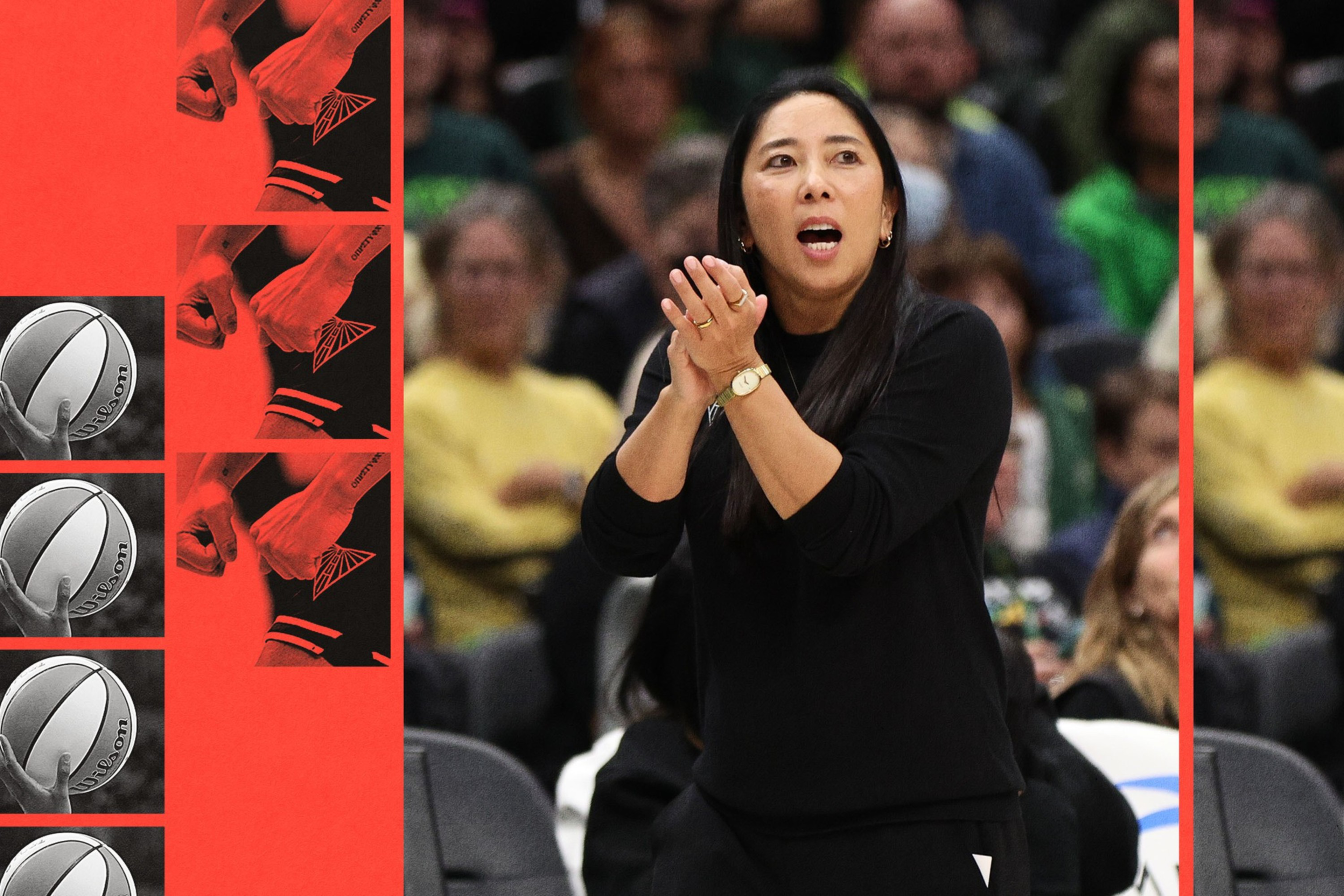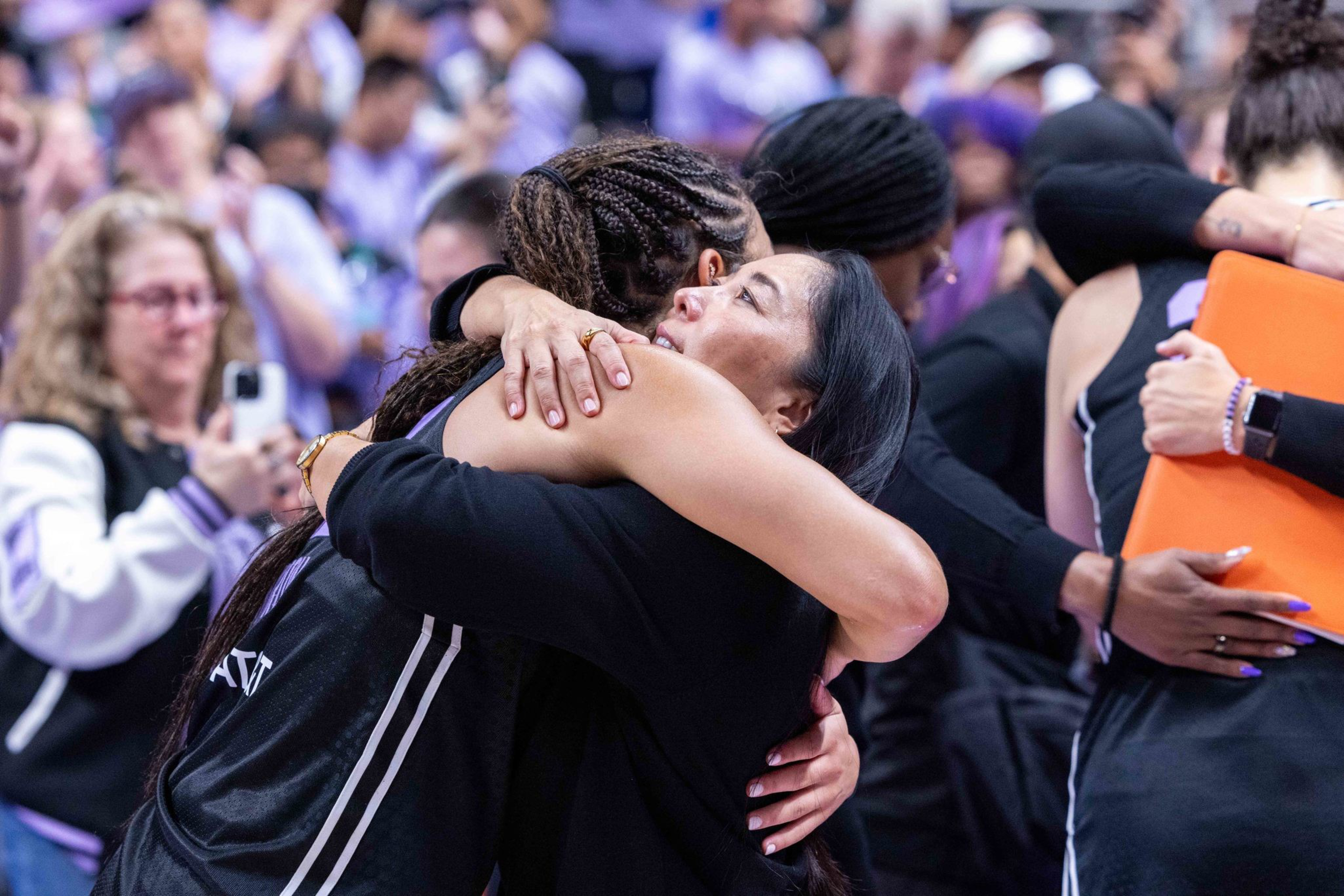Want more ways to catch up on the latest in Bay Area sports? Sign up for the Section 415 email newsletter here and subscribe to the Section 415 podcast wherever you listen.
Eleven months before the Golden State Valkyries’ inaugural season ended with a playoff berth and Natalie Nakase earned the WNBA’s Coach of the Year award, she received a life-changing phone call. One she wasn’t entirely ready to answer.
“I had a little bit of anxiety and nervousness. Is this the right thing to do?” said Nakase, who joined Section 415 to reflect on her first year leading the Valkyries. It wasn’t exactly calming when general manager Ohemaa Nyanin asked to FaceTime, a method of communication Nakase openly despises.
“I was still with the Aces and committed to everyone in that whole organization.”
At the time, Nakase was one of Becky Hammon’s assistants in Las Vegas, and settled into a winning culture with two WNBA championships to show for it. But when Nyanin and Golden State came calling with an offer to become the first head coach of the WNBA franchise, hesitation met the opportunity of Nakase’s dreams.
Section 415: How Natalie Nakase turned the Valkyries into an immediate force

Section 415: Tim Kawakami analyzes the 49ers, Giants, and Warriors

Section 415: Min Woo Lee, Steph Curry, and the story of The Bay Golf Club

“So much joy within two seconds because (my family) knew how hard this opportunity was for me to get,” Nakase said. “This has been a lifelong dream of mine.”
That was a year ago. And what followed was chaos of the best kind.
The front office was a skeleton crew, the Valkyries’ practice facility in Oakland stood unfinished, and the roster: nonexistent.
“We wanted to be super intentional and instead of hearing naysayers say that expansion teams aren’t very good, we were like ‘Let’s call it a new team,’” said Nakase, who rejected the “expansion” label from the get-go. “Let’s call it our story, how we want to build it.”
Nakase, Nyanin, and other Valkyries leaders spent two months studying film before December’s expansion draft finally arrived. Even with careful preparation and a clear vision to execute, nervous energy filled the room on the big day.
“We didn’t know how people were going to react. Were [the players] going to be happy … frustrated, upset, or sad that they were leaving a team that they maybe loved being a part of?”
Nakase said that Nyanin, and former assistant GM Vanja Cernivec (now the GM of the Portland Fire) huddled around the phone with her to make calls to the team’s new players together.
In May, Nakase faced more uncharted territory: leading her team through training camp. It was a group that had never shared the floor before and had three weeks to be game-ready.
With so many unknowns, Nakase zeroed in on a focus that simplified the matter — she was looking for connection. To her, it was the truest measure of competitiveness, cohesion, and chemistry.
“I’ve been on teams that won, I’ve been on teams that lost, and the ones that connect the best go past expectations,” Nakase said of the early days at training camp. “Then, do they play with joy? The people that could dance and make fun of themselves early on, those players were vital.”
The result? A record-setting 23-21 season and a team that adhered to Nakase’s philosophy of improving every day, one percent at a time. She saw her team’s competitive edge and belief early on, but insisted that her players keep their heads down, focused until the end.
“I never talked about a record,” Nakase said. “Which was key because it was irrelevant. We wanted to focus on getting better.”
“I challenged the (players) on enjoying the unpredictability. We can control our health, our mental, our physical, our game planning, being on the same page. And when you keep things like that simple for a team, I think that allows them to play more clear and free and with joy.”
Six weeks after the season ended, Nakase looks back at everything her team accomplished with chills. Her star point guard, Veronica Burton, was named the WNBA’s Most Improved Player, but Nakase saw everyone on her roster, top to bottom, grow. It happened in front of a fan base that swelled throughout the Bay Area and set a new standard around the league. After Golden State’s debut season came to a close with a last-second loss to the Minnesota Lynx at SAP Center, the arena stood still. Fans didn’t file out to their cars, and the team didn’t sulk to the locker room.

“One of the most humbling experiences I’ve ever had … so surreal,” she said, recalling how her players huddled at halfcourt after the final buzzer and the sellout crowd remained at their seats chanting and embracing the team for its unforgettable first season.
“Credit to our fans for giving us that feeling because I told [my players] that they are the only 13 players that really got to feel that every home game.”
In the midst of another offseason, Nakase doesn’t focus on looming unknowns, many of which she proved she could conquer. She just finds joy in the grind.
“I love hard, intentional work,” she said. “Ten of our players are playing right now overseas, and it’s so cool … they are playing heavy minutes on their teams and contributing (in EuroLeague).”
Nakase’s first season was filled with nerves, obstacles, and constant learning, but one paradox defined it. This year was always about winning — every game, every possession — and yet, somehow, never just about the wins.
“Every single player improved in our system and we have evidence to validate that point.”

